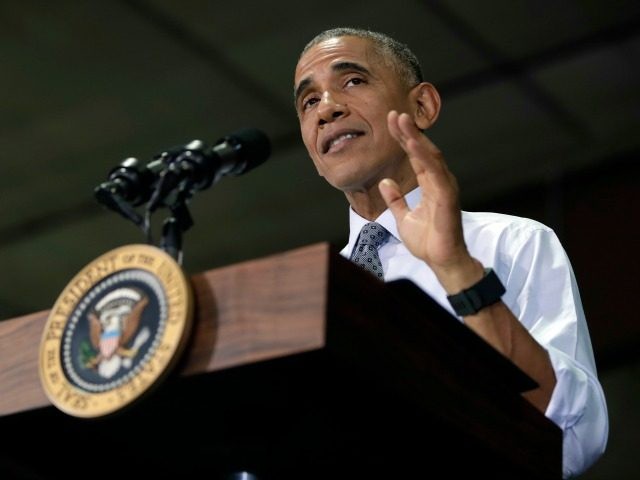From the Associated Press:
WASHINGTON–The government ran a $587 billion budget deficit for the just-completed fiscal year, a 34 percent spike over last year after significant improvement from the record deficits of President Barack Obama’s first years in office.
Friday’s deficit news, while sobering, does not appear bad enough to jolt a gridlocked Washington into action to stem the flow of red ink. It came in an annual report by the Treasury Department and the White House budget office.
In the presidential campaign, intractable budget deficits and growing debt have been mostly neglected by Democrat Hillary Clinton and Republican Donald Trump.
The latest figures show that the government is borrowing 15 cents of every dollar it spends. Government spending went up almost 5 percent to $3.9 trillion in fiscal 2016, but revenues stayed flat at $3.3 trillion.
Obama came to power after the 2008 financial crisis and as the economy was still emerging from a deep recession, and the deficit spiked to $1.4 trillion, which required Treasury to borrow 40 cents for every dollar spent by the government. It remained above $1 trillion for three more years before declining to $439 billion last year as the U.S. economy continues to slowly grow.
“The Obama Administration’s agenda has spurred durable economic growth and the longest streak of job growth on record, while sharply reducing the deficit to a sustainable level,” said Treasury Secretary Jacob Lew said in a statement. “We have built a solid foundation for continued investment in economic growth and opportunity for all, while maintaining fiscal discipline and using fiscal space appropriately to grow the economy.”
Now, the Congressional Budget Office is predicting deficits will, more or less, remain in the $600 billion range for the next several years. Those are eye-popping numbers to the average person, but they represent about 3 percent of the size of the economy, a level many economists say is bearable.
Trump is promising tax cuts estimated to cost $6 trillion or so in the coming decade and has criticized congressional Republicans, including House Speaker Paul Ryan of Wisconsin, for proposing to cut Medicare and other government programs. Clinton promises to increase taxes on the wealthy and spend the money on college tuition subsidies, infrastructure and expansion of President Barack Obama’s health care law.
“There’s no leadership on the campaign trail. What both Clinton and Trump have said, essentially, is, ‘Here are the new things that I want to do,'” said Douglas Holtz-Eakin, a GOP economist and president of the American Action Forum think tank. “What that’s really saying is: ‘I have no play to fix the existing problem. None.’ So they have no plan.”
If Clinton wins, many Washington observers believe the chronically gridlocked capital city will remain unable to act on major issues such as the deficit, taxes or weaknesses in Obama’s 2010 health care law.
“We just have big philosophical differences,” Ryan told a home-state group of college Republicans on Friday, adding that a Clinton victory would mean “having more of the same stalemate.”
The deficit issue has largely fallen in prominence in Washington in recent years, due in large part to its fall from record highs and a sense of resignation that Obama and congressional Republicans simply can’t agree on ways to cut it after some failed attempts in recent years. Most economists don’t believe the deficit is very worrisome in the short term.
“It’s totally manageable. There’s literally nothing there to worry about,” said left-leaning economist Dean Baker of the Center for Economic and Policy Research. “What’s the interest rate on 10-year bonds or the 30-year bond? If actors in the financial markets thought there was any plausible probability of this sort of fiscal crisis … we’d be looking at 10-year rates of maybe 5, 6, 7 (percent).”
But the picture over the long run is more problematic, at least under a conventional view that if deficits continue to rise the national debt grows, government borrowing would “crowd out” private lending and force up interest rates. And if interest rates go up, the government would have to pay much more to finance the more than $14 trillion in Treasury debt held by investors.
“We’re going into a debt spiral and, depending how far down you get in that spiral you have a sovereign debt crisis,” said Holtz-Eakin, a former GOP-appointed CBO director. “That’s just running a big risk for the budget and the economy.”

COMMENTS
Please let us know if you're having issues with commenting.